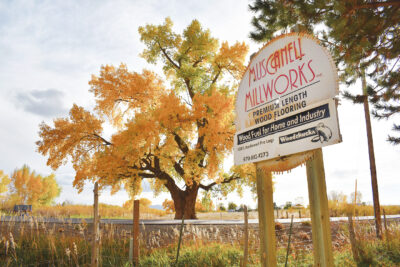Throughout the Northeast region, at the time of this writing, lumber sources said that the market had begun to slow due to the holidays. Some of the sources noted that it seemed the market was reverting to traditional seasonal buying patterns.
In Massachusetts a lumber salesman said that he has observed the market beginning to soften up a little bit. “I would say that the market is different than it was six months ago. It is resuming its normal schedule; it hasn’t been normal in years,” he remarked.
He said that his company deals only in Eastern White Pine and Western Red Cedar in all Common grades and in 4/4 boards and patterns. “Eastern White Pine has been selling the best for us,” he noted.
His company mainly sells to industrial manufacturers and independent lumber yards. He mentioned that many of his customers feel the same way about the market beginning to see traditional buying patterns again.
Regarding transportation, he said, “Right now, it’s not too hard to find a truck. They are expensive, but they will probably continue to be expensive.”
A lumberman in New Hampshire said the market is quieter than it has been over the past six months. “I would say that we went from the frenetic pace that was set over the course of the pandemic to a much slower pace. I think that it is even slower than it was before the pandemic,” he remarked.
His company handles Southern Yellow Pine, Eastern White Pine, Eastern and Western Spruce and some imported Spruce, with Eastern Spruce being their best seller. “We sell these in all grades, from the lowest grade to the highest grade, in thicknesses of 4/4 and 5/4,” he said.
“We sell to all kinds of different customers, retail lumber yards, home centers, end-use manufacturers and wholesale distribution yards,” he mentioned. “They are starting to notice that they are having to make more outgoing phone calls then they have in the past few years. Their phone activity is slower, it seems to be trending back to the way life was before the pandemic.”
When asked if transportation has been an issue for his company, he said that, as of this writing, it has not been one.
In Maine, a lumber spokeswoman said that their market is slow and seems to be non-existent. “The market is worse than it was six months ago. The housing market is falling apart, and there’s not a lot of building going on. People are having to spend more money on the cost of fuel and parts for transportation,” she said.
Her company offers Spruce and Fir in grades No. 2 Common and Better, “which is the premium mixed in with our No. 2 grade,” she said.
Her company sells to wholesalers, and they have not offered any comments to her about the status of their markets.
“We move a lot of products by rail, and with there being a shortage in rail cars, we have had an issue with transportation. The cost of fuel is also affecting transportation, as trucking is more expensive,” she remarked.
She did note that regarding their labor force things are leveling out.









